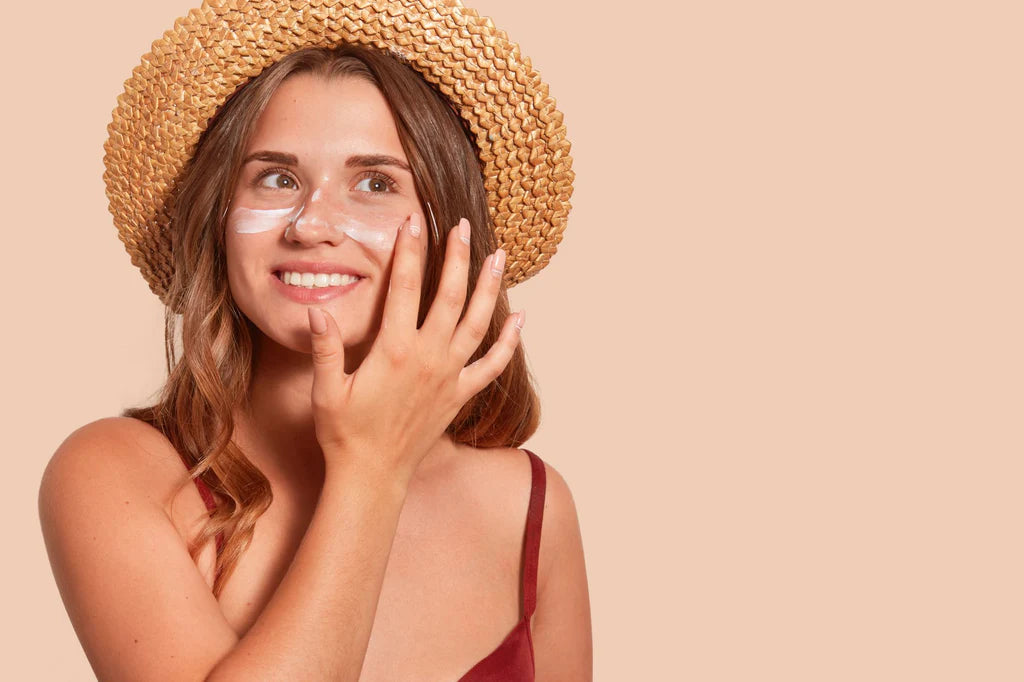Introduction
Dealing with acne can be immensely challenging in itself, yet the fear of enduring permanent scars after breakouts adds an additional layer of distress to the issue. The angry red pimples you get today have the potential to leave behind depressed scars, dark spots, and uneven skin texture if not properly cared for.
While genetics does play a role, there are proactive steps you can take right away when you notice a new acne lesion forming to minimize the chances it will scar. Implement these skincare tips at the first sight of blemishes to avoid acne scarring.

1. Spot-Treat Blemishes Immediately
As soon as you feel a pimple brewing under your skin or see a whitehead popping up, it's important to start targeted spot treatment. Look for over-the-counter acne-fighting ingredients like salicylic acid or benzoyl peroxide that penetrate pores, dry out blemishes, and combat acne-causing bacteria. Dabbing these directly onto new breakouts can help shrink them faster and reduce inflammation in the surrounding skin that leads to scarring. Apply your spot treatment once or twice a day after cleansing to help prevent a pimple from forming a head and promote speedy healing.
2. Gentle Regular Exfoliation
While you don't want to scrub directly at inflamed breakouts, keeping the rest of your skin exfoliated can prevent future acne and minimize the appearance of existing scars. Using a face scrub with soft and rounded beads or an exfoliating acid product like lactic acid or glycolic acid helps lift away dead skin cells. This reveals fresh new skin, prevents pore-clogging, and makes your complexion smoother and more even overall. You can exfoliate your blemish-free areas 2 to 3 times a week. Just don't over-exfoliate to the point of irritation.
3. Brightening Serums and Creams
Once a pimple has fully healed, you may be left with stubborn red or brown marks - these are referred to as post-inflammatory hyperpigmentation. The inflammation of acne leads to excess melanin production, causing dark spots and discoloration. Look for skin-brightening serums and moisturizers containing proven ingredients like vitamin C, niacinamide, kojic acid, alpha arbutin, azelaic acid, and licorice root extract. Applying these to acne marks, old and new, will help fade their appearance and prevent darkening, leading to clearer, more even-toned skin.

4. Proper Skin Hydration
Keeping your skin well-hydrated can create a protective moisture barrier and deter the bacteria and excess oil production that leads to breakouts and subsequent scarring. However, heavy creams may clog your pores. Opt instead for an oil-free, non-comedogenic gel moisturizer that provides lightweight yet effective hydration. Look for added skin-soothers like aloe, calendula, and green tea extracts. Using an SPF moisturizer during the daytime will also prevent sun exposure from darkening acne marks.
5. At-Home Microdermabrasion
More serious acne scars like indentations and pitting often require professional treatments. However, for general skin texture and tone improvement, at-home microdermabrasion products can help. These contain tiny crystals to buff away dead cells when massaged onto the skin in a circular motion. This type of deeper exfoliation makes scars look and feel smoother. Use an at-home microdermabrasion scrub or tool 2 to 3 times a week for best results. Just avoid direct contact with active breakouts.
6. Stay Out of the Sun
Exposure to UV rays can darken the hyperpigmentation left behind by acne lesions, making your scarring more noticeable. It also dries out your skin, potentially triggering more breakouts. Use a broad-spectrum SPF 30 sunscreen on your face whenever you go outside, even on cloudy days, to protect acne-prone skin. Don't forget to reapply every 2 hours if sweating or swimming. Limiting direct sunlight will help prevent new and old acne scars from worsening.

7. Cortisone Injections for Severe Cysts
For those with severe cystic acne, the larger lesions have a higher chance of scarring without rapid treatment. See your dermatologist as soon as possible for a cortisone injection into cysts or nodules. The steroid directly reduces the size and inflammation of the blemish to avoid rupture and minimize scar potential. You may need multiple injections for several weeks to fully flatten cysts.
8. Avoid Picking and Popping
As tempting as it may be, picking or popping pimples forces bacteria deeper into the skin and causes even more surrounding inflammation - leading to wider scarring. The trauma also introduces outside germs into open pores. Instead, protect each blemish using acne patches or hydrocolloid bandages to promote healing. These painlessly absorb fluid and pus inside clogged pores without spreading bacteria or rupturing pimples.

Conclusion
Even if you are genetically predisposed to acne scarring, it doesn't guarantee every new breakout will leave a permanent mark. Take prompt action by treating new spots quickly, exfoliating regularly but gently, and using brightening and hydrating skincare products. Minimize sun exposure and refrain from picking at your skin.
If you are using JOVS 4D Laser Light Therapy Mask, you may wonder can you still use it. Face acne is due to internal inflammation, if you use a mask at this moment will have an impact on the appearance of acne, and for the location of the wound, need enough space and air to avoid infection, do not recommend that this situation wear the use of products.
This comprehensive skincare approach empowers you to treat each spot without residual scarring. While for those already grappling with existing acne scars, you might consider exploring photorejuvenation devices to manage and improve the appearance of scars. By dedicating this care and attention to your skin, you're setting the stage for a healthier, more resilient complexion.
Read More
- Permanent Hair Removal Ways for Men
- Best Valentine's Day Gifts in 2023: Heart-warmed Gift Guide from JOVS
- Tame Facial Redness: Simple Routines for Soothing Red, Irritated Skin
- JOVS DPL Laser Device Review: Uncover Amazing Skin Transformation at Home
- Tailored Grooming for Athletes: Unlock Speed, Endurance & Focus!








